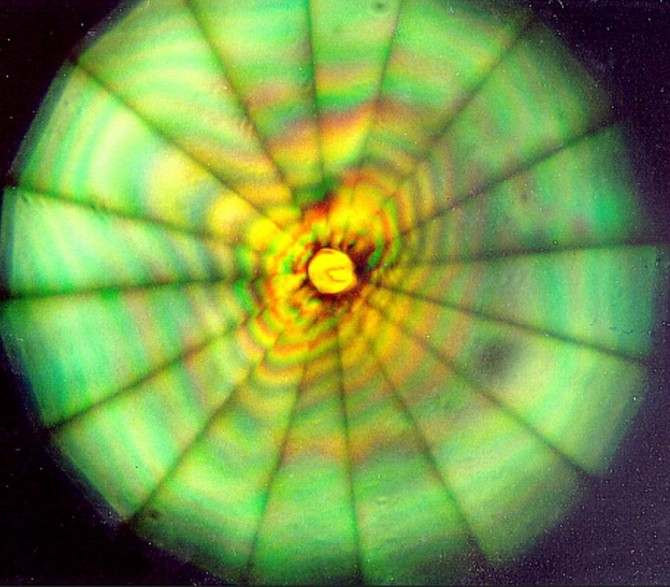High-pressure scientists 'journey' to the center of the Earth, but can't find elusive metallic hydrogen
Hydrogen, as any materials scientist will tell you, is a tough nut to crack. It is the simplest of the atoms, but in its molecular, or solid state it is incredibly complex. The long-sought goal of turning the element into a metal, it has been predicted, would require pressure close to that found at the center of the Earth.
Researchers at Cornell University have now dispelled that theory: They submitted hydrogen gas to just such pressure, but the element remained unchanged. "It seems," says Cornell's Arthur Ruoff, "that the pressure required for this transition is higher than previously thought."
This latest research into metallic hydrogen, the holy grail of high-pressure physics, is reported in this week's edition of the magazine Nature, published on May 7. The research team, led by Ruoff, the Class of 1912 Professor of Engineering and Materials Science at Cornell, included Chandrabhas Narayana, a Cornell postdoctoral researcher; Huan Luo, a former Cornell postdoctoral researcher; and Jon Orloff of the Institute for Plasma Research, University of Maryland.
The possibility of metallic hydrogen is of enormous importance because of the material's potential as a superconductor, conducting electricity with little or no resistance, resulting in huge energy savings. Ruoff and his team also believe the metal could be relevant to the study of the interiors of larger planets, such as Jupiter, where metallic hydrogen is thought to be in abundant supply.
In the Periodic Table, hydrogen sits above the alkali elements such as lithium, sodium and potassium, which are all metals. Since the mid-1930s researchers have known that if sufficient pressure is applied to solid hydrogen, it, too, will become an alkali metal. Last year liquid metallic hydrogen was created for less than a microsecond by scientists at Lawrence Livermore National Laboratory in California. This was done by submitting hydrogen to both high pressure and high temperature using a two-stage gas gun.
Hydrogen becomes a solid either at low temperatures or under compression. In this state, says Ruoff, it is a good insulator, like rubber. As the pressure is increased, the solid will ultimately become a metal, and a conductor, like copper. Ruoff says that the theoretical explanation of this is that as the hydrogen is squeezed, the molecule decomposes and forms a lattice of protons surrounded by electrons. But most previous theories, he says, "have grossly underestimated the pressure required to do this."
The Nature article notes, "Calculations suggest that depairing (destruction of the molecular bond) should occur around 340 GPa, accompanied by the formation of an alkali metal at this pressure or at substantially higher pressures." But the researchers found that solid hydrogen showed no signs of looking like a metal at pressures of up to 342 GPa. (A GPa is a gigapascal, a measurement of atmospheric pressure, and is equal to 10,000 times the pressure at the Earth's surface. The pressure at the center of the Earth is about 361 GPa, or more than four million times surface pressure.)
Such incredible pressures were achieved by compressing the hydrogen in a diamond anvil cell, a small device consisting of pairs of the highest quality diamonds with tips beveled to one-fourth the diameter of a human hair. The diamonds, however, despite their seeming perfection, ultimately cracked. In all, the team cracked 15 pairs of diamonds.
Ruoff speculates that the hydrogen next to the diamond surface diffuses along defects called dislocations and into the diamonds, causing cracking.
Ruoff and his colleagues previously have used the diamond anvil cell to make metallic oxygen, sulfur and xenon. Recently researchers at Carnegie Institute in Washington, D.C., reproduced these experiments on metallic sulfur, but at low temperatures, and found that the material becomes a superconductor at 10 degrees Kelvin (minus 442 degrees Fahrenheit) when the metallization pressure is reached.
The failure of solid hydrogen to become an alkali metal even at extreme pressures, says the Nature article, "has implications for our current theoretical understanding of the solid-state phase."
The research was funded by the National Science Foundation.
Get Cornell news delivered right to your inbox.
Subscribe